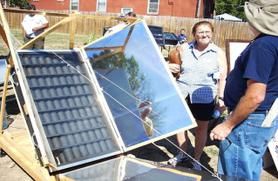Passive Solar energy is great... it is free, clean, simple, and functional. Cansolair has been marketing a forced convection solar heater successfully for awhile now, and while the design is precise, ingenious, and effective, the very same device can be fashioned by your average do-it-yourselfer for just a few bucks. We are talking about a much smaller unit that would be designed to heat a 400 to 500 square foot two car garage/workshop.
Now, you may not be exactly be ready to suit up in your bathing suit once you get this heater put together and running, but it should be more than enough to take the chill out of any garage (but even more so in an insulated garage). It should be possible to increase the temperature of most any garage, anywhere from 10 degrees on up, just by making this rather simple homemade convection heater.
Advertisement
Now there are a number of ways to do this, with the fancy designs usually providing the best results, but we are going to explain the most simple and basic plan of attack. Then you savvy do-it-yourselfers can add on to this idea with your own ingenuity and make it even better.
